Computer performance enthusiasts and overclockers are always in pursuit of every extra bit of speed. This brings them to ways of improving thermal performance of system CPUs and GPUs. Most desktop processor have copper heatspreader plate (or IHS, integrated heat spreader) on the package, to protect fragile silicon die from damage and help spreading heatflow to larger surface. Past HEDT and server chips have indium metal as attachment interface between silicon and IHS. But cheaper desktop client CPUs (LGA115x socket) usually have thermal grease compound between die and IHS, which have increased heat transfer resistance.
As die sizes and transistor node sizes continue to go towards higher power density, since Haswell Core 4rd series generation overclockers were often replacing thermal interface between IHS and CPU to a better performing greases. As first step, CPU must have IHS physically removed, and this procedure is called “delidding”. Options from here are either replace existing thermal compound with superior TIM such as metal or diamond-infused paste or liquid metal type material. Then IHS is fixed back in place and CPU installed into system like usual.
More radical and more dangerous solution is to remove the heat spreader entirely and directly cool the naked CPU die with flat heatsink/block. This type of cooling method requires use of a die support plate to allow socket mechanism to lock CPU in socket, or use special plates to otherwise keep CPU locked. Quick search on internet can find you solutions to do this.
7th series Core-X series processors
Prior to Intel’s Core i7-7xxx launch in 2017, all HEDT CPUs were using indium attach between the die and processor, because these processors usually have large dies and directly derived from server segment. However how all Core-X 7th generation CPUs are using thermal grease. This is easier for manufacture, as silicon die and IHS does not require special gold-nickel plating to allow indium contact. But drawback is higher (sometimes 10’s of °C, especially with overclocking involved) temperatures and worse processor performance.
Open-hardware HEDT delidder tool
And to allow easy delidding of these processor this article presents open-hardware design for the simple tool. HEDT processors are expensive, and it’s worth to minimize risk of damage, when removing IHS.
The tool works simply by securing the CPU substrate and slow shift of heat spreader across longer axis to break silicone glue between PCBA and IHS. Once this is done, IHS can be freely removed. By applying force only to IHS and keeping surfaces straight is key importance for safe procedure.
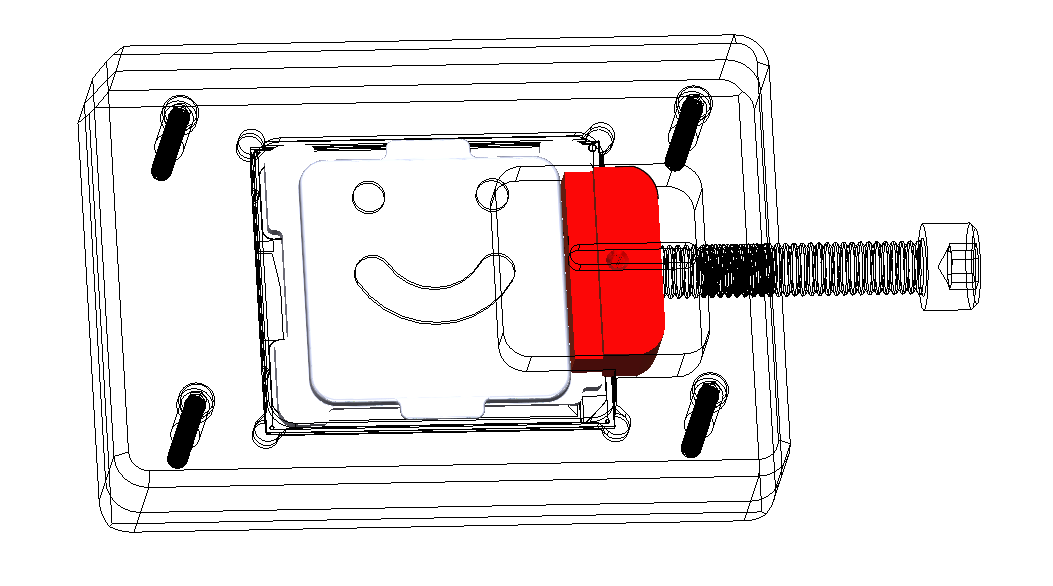
Kit consists of three custom parts and few standard socket head screws.
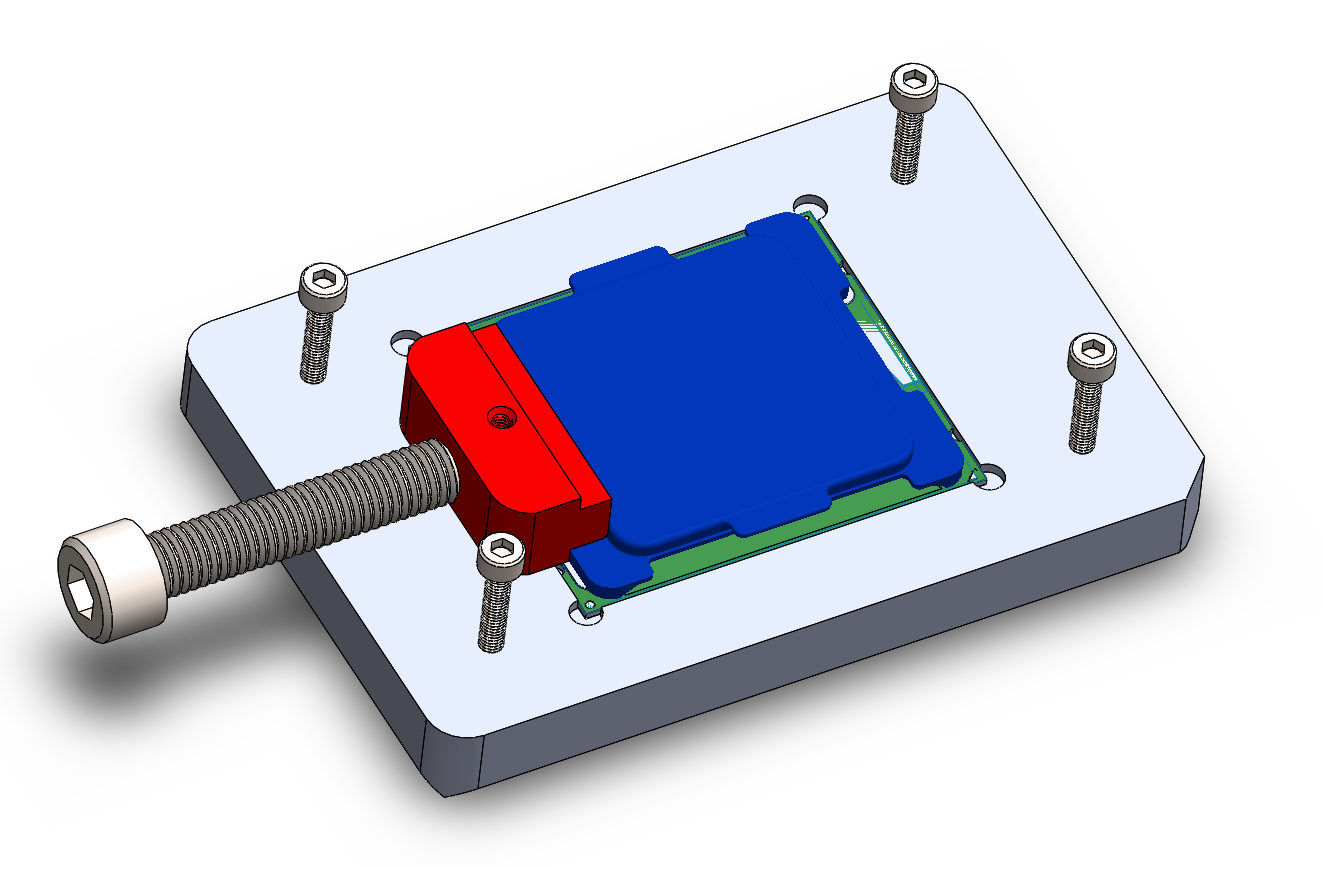
Bottom base part have milled area for CPU PCB and four corner threaded holes to fix two parts together.
Top cover part have milled area for CPU IHS and cavity for the moving slider, that push IHS.
Slider part is small piece than have two working sides, to support both Kabylake and Skylake CPU IHS shape configurations.
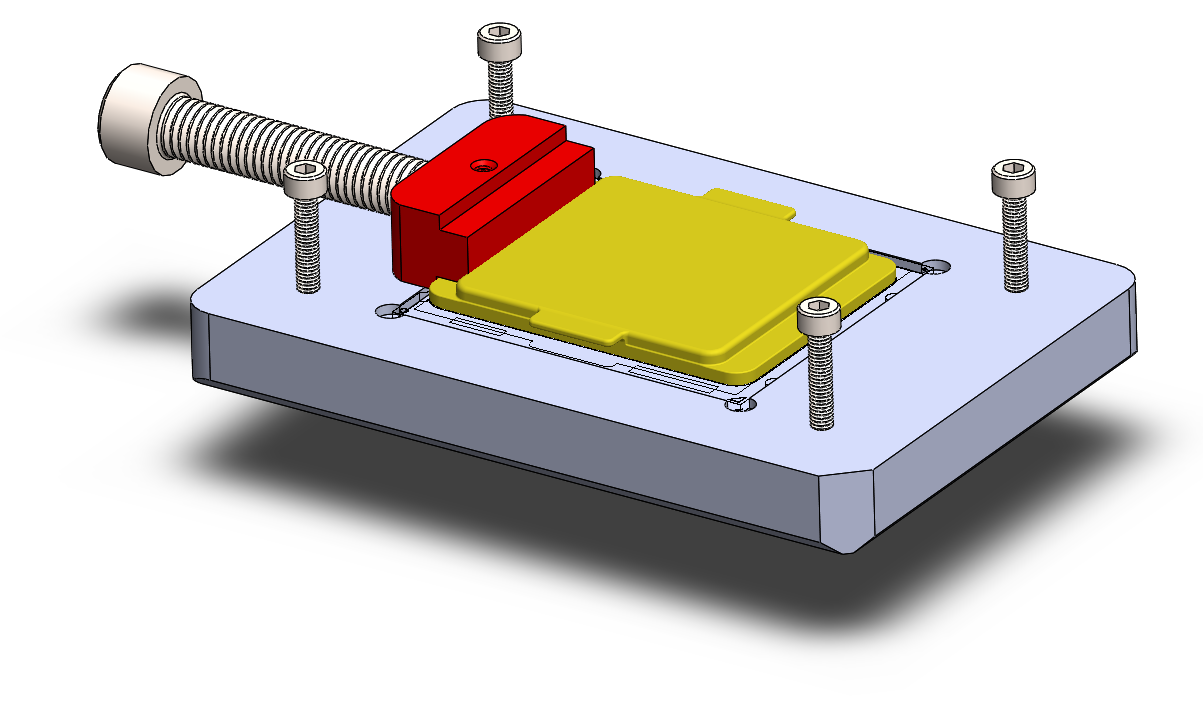
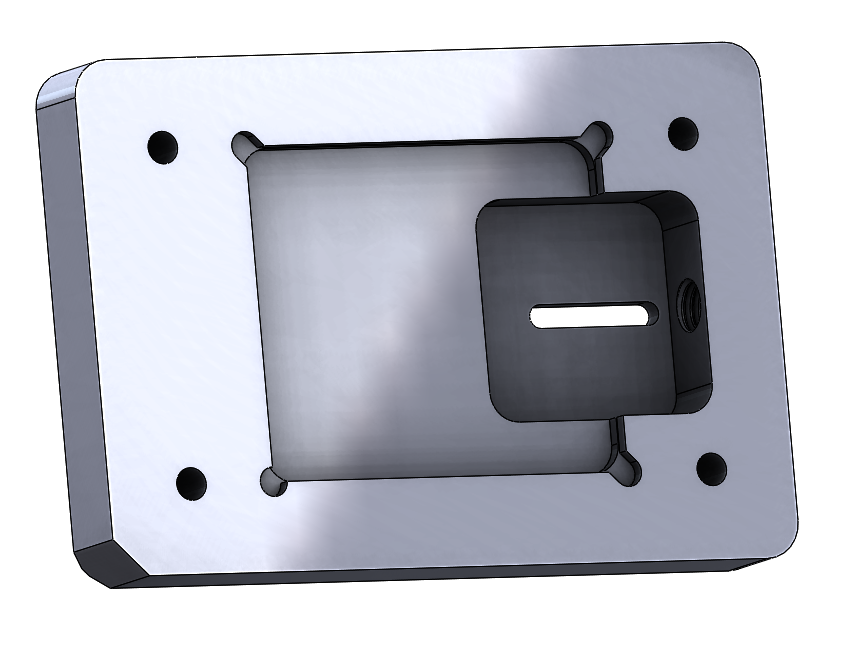
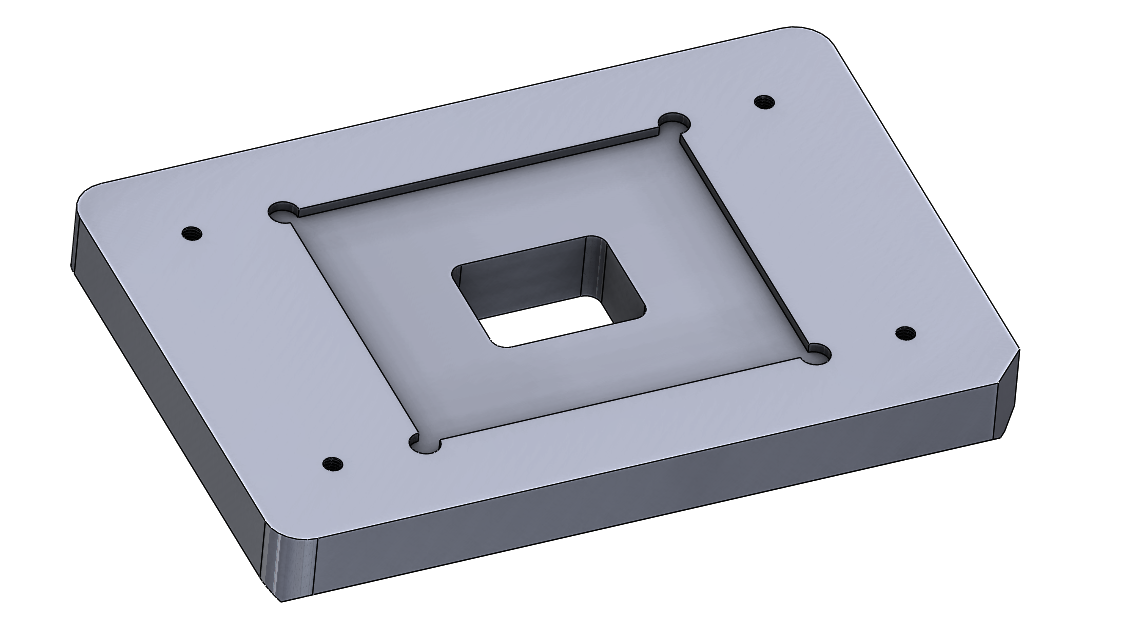
Being an open-hardware project, you have to find your local CNC-shop and order parts, using drawing/CAM files released below.
Base part, Rev.B00, STEP 214 3D file
Cover part, Rev.B00, STEP 214 3D file
Slider part, Rev.B00, STEP 214 3D file
Base part, Rev.B00, PDF drawing file
Cover part, Rev.B00, PDF drawing file
Slider part, Rev.B00, PDF drawing file
xDevs.com nor Kingpincooling.com does not have or sell ready to use parts or kits. Two sample kits were build to confirm and test function of the assembly before publishing files. Photo of the prototype presented below.
Step-by-step use guide
Prepare parts for complete assembly:
- Base part
- Cover part
- Slider part
- M8 40mm or longer depth socket head screw
- M4 20-30mm depth socket head screw
- M3 10-15mm depth screw
- Intel Core-X 7th series processor, such as Core i7-7740K or Core i9-7900X.
Do not attempt to use this delidder kit for older HEDT CPUs, such as Intel Core i7-6xxx series, or processor will be damaged. These processors use metal indium attach for IHS and do not require delidding.
Install processor into carrier. Pre-heat processor with carrier and hot air station/heat gun to +150C or so to meld indium layer. Apply multiple turns on M8 screw to slide the IHS off the chip, while keeping CPU package hot. IHS will be removed with small force resistance. IF it’s resistance is high, increase the temperature of preheating.
Projects like this are born from passion and a desire to share how things work. Education is the foundation of a healthy society - especially important in today's volatile world. xDevs began as a personal project notepad in Kherson, Ukraine back in 2008 and has grown with support of passionate readers just like you. There are no (and never will be) any ads, sponsors or shareholders behind xDevs.com, just a commitment to inspire and help learning. If you are in a position to help others like us, please consider supporting xDevs.com’s home-country Ukraine in its defense of freedom to speak, freedom to live in peace and freedom to choose their way. You can use official site to support Ukraine – United24 or Help99. Every cent counts.
Modified: Dec. 5, 2022, 9:32 p.m.
